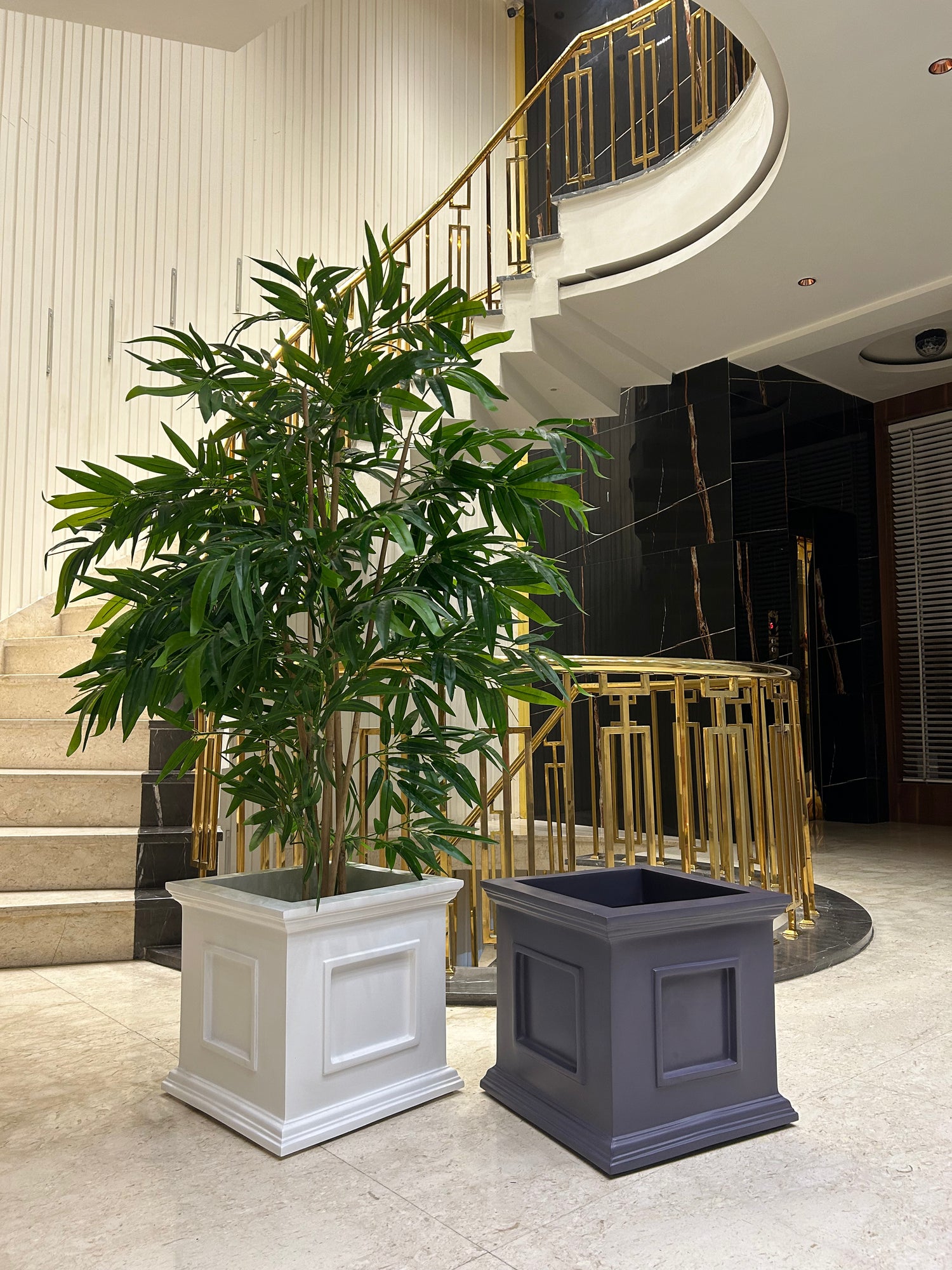
Gardening Hacks: 10 Simple Tricks to Improve Your Garden’s Health
Share
Gardening is more than a hobby; it’s a fulfilling journey toward creating a thriving green space that enhances your environment and well-being. Whether you’re a seasoned gardener or a novice, finding ways to improve your garden’s health can make a significant difference in plant growth, aesthetic appeal, and overall satisfaction. In this blog, we’ll delve into 10 ingenious gardening hacks that cater to indoor gardening and outdoor gardening enthusiasts alike. These tips work for all setups, from tiny small planter pots to the biggest planter pots.
1. Use Coffee Grounds as Fertilizer
Coffee grounds are a fantastic, eco-friendly fertilizer that adds nitrogen to the soil, promoting lush, green foliage.
- How to Use: Spread used coffee grounds in a thin layer around plants or mix them into compost. Avoid over-application as it can lead to an overly acidic soil environment.
- Best for: Herbs, flowering plants in indoor planters, and vegetable gardens in outdoor planters.
Tip: Use them sparingly with small plants in small planter pots to prevent over-acidity.
2. Optimize Watering with DIY Irrigation Systems
Efficient watering is crucial for healthy plant growth. A simple irrigation hack can save water and time.
- Hack for Indoor Gardening: Use a wine bottle filled with water. Turn it upside down and insert it into the soil of your indoor planters for a slow-release watering system.
- Hack for Outdoor Gardening: Use a soaker hose or repurpose plastic bottles by poking holes and burying them near the roots of plants in outdoor planters.
3. Companion Planting for Natural Pest Control
Companion planting leverages plant pairings to repel pests and enhance growth.
|
Companion Plants |
Benefits |
|
Basil and Tomatoes |
Basil repels aphids, hornworms, and mosquitoes while improving tomato flavor. |
|
Marigolds and Vegetables |
Marigolds deter nematodes and attract pollinators. |
|
Aloe Vera and Indoor Herbs |
Aloe vera enhances humidity, keeping herbs hydrated in indoor planters. |
This hack benefits indoor gardening and outdoor gardening equally, with minimal effort.
4. Boost Soil with Banana Peels
Banana peels decompose quickly and enrich soil with potassium and phosphorus, essential for flowering and fruiting.
- How to Use: Chop peels into small pieces and bury them near plant roots. Alternatively, blend them with water for a liquid fertilizer.
- Best for: Fruit-bearing plants in the biggest planter pots.
5. Make Use of Vertical Gardening
Maximize space with vertical gardening solutions. This approach is particularly useful for indoor gardening and balconies.
- Ideas for Small Spaces:
- Use hanging small planter pots for herbs or trailing plants.
- Install wall-mounted racks to display indoor planters.
- Outdoor Gardening Options:
- Create trellises for climbing vegetables.
- Stack tiered outdoor planters to grow more in limited spaces.
6. Create a Compost Station
Composting is a sustainable way to recycle kitchen scraps while nourishing your garden.
- For Indoor Gardening: Use a countertop compost bin to collect peels and scraps.
- For Outdoor Gardening: Designate a corner of your garden for composting or use a compost tumbler.
Actionable Takeaway: Composting reduces waste and provides a free, nutrient-rich soil amendment perfect for both small planter pots and the biggest planter pots.
7. Use Cinnamon to Prevent Diseases
Cinnamon is a natural fungicide that prevents damping-off disease in seedlings.
- Application: Sprinkle cinnamon powder on seed-starting mix or around the base of plants in indoor planters.
8. Mulch for Moisture and Weed Control
Mulching retains moisture, prevents weeds, and stabilizes soil temperature.
- Indoor Gardening: Use decorative moss or small pebbles as mulch for indoor planters.
- Outdoor Gardening: Apply straw, wood chips, or leaves around plants in outdoor planters.
9. Repurpose Household Items
Repurposing not only saves money but also adds character to your garden.
- Ideas:
- Use teacups as small planter pots for succulents.
- Convert an old bathtub into one of the biggest planter pots for a striking garden centerpiece.
10. Tailor Plant Choices to Your Environment
Choose plants that suit your specific gardening context to reduce maintenance and increase success rates.
|
Environment |
Suggested Plants |
|
Indoor Gardening |
Snake plants, peace lilies, pothos in indoor planters. |
|
Outdoor Gardening |
Lavender, rosemary, or hydrangeas in outdoor planters. |
|
Small Planter Pots |
Herbs like thyme, mint, and parsley. |
|
Biggest Planter Pots |
Small fruit trees or large ornamental grasses. |
Key Takeaways for Gardeners
- Beginner Tip: Start small with small planter pots and low-maintenance plants. Experiment with hacks like coffee grounds or banana peels to learn soil improvement basics.
- Intermediate Tip: Invest in vertical gardening solutions and companion planting to optimize limited space and resources.
- Advanced Tip: Incorporate DIY irrigation and composting systems for sustainable, long-term garden health.
Conclusion: Transform Your Garden with Simple Yet Effective Hacks
Gardening doesn’t have to be complicated or expensive. By implementing these 10 simple hacks, you can create a vibrant, thriving garden that suits your space and lifestyle, whether you’re nurturing plants in indoor planters or cultivating a lush landscape in outdoor planters. From maximizing the utility of small planter pots to enhancing the visual appeal of the biggest planter pots, these tips are your stepping stones to gardening success.
Start small, stay consistent, and watch your garden flourish!


